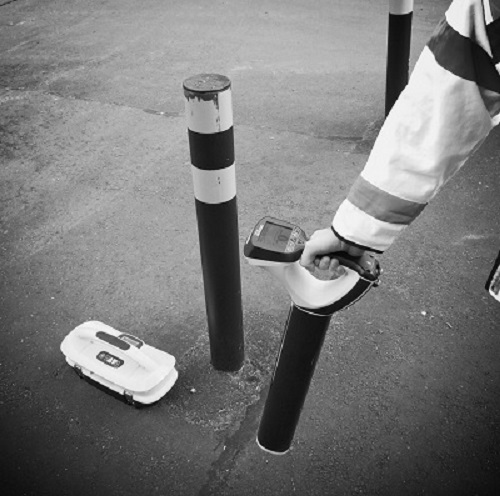Combining Ground Penetrating Radar and Radio Detection for Comprehensive Underground Utility Surveys

Introduction
- In the complex world of underground utility surveys, no single technology suffices to fully map everything going on below the surface. Ground Penetrating Radar (GPR) and Radio Detection, while powerful in their own right, often reveal their full potential when used in conjunction. This post explores how these technologies complement each other, ensuring a more thorough and accurate survey.
What is Ground Penetrating Radar (GPR)
GPR is a non-invasive method that uses radar pulses to image the subsurface. It detects reflected signals from subsurface structures. GPR can be used in various media, including rock, soil, ice, fresh water, pavements, and structures.
Advantages of GPR:
- Detailed Images: GPR provides detailed images of underground features.
- Depth Penetration: It can penetrate deeper compared to radio detection, depending on the soil conditions and frequency of the radar.
- Non-Metallic Object Detection: GPR is effective in locating non-metallic objects like plastic pipes or voids.
Limitations of GPR:
- Soil Limitations: GPR’s effectiveness reduces in conductive soils like clay or saline conditions.
- Data Interpretation: The data requires interpretation by experienced professionals, as it can be complex.
What is Radio Detection?
Radio Detection involves using electromagnetic equipment to detect signals emitted by underground utilities. It’s particularly effective for locating metallic pipes and cables.
Advantages of Radio Detection:
- Highly Effective for Metals: It is extremely efficient in locating metallic utilities like steel pipes and electrical cables.
- User-Friendly: Typically easier to use and interpret compared to GPR.
- Surface Access: Less dependent on surface access than GPR.
Limitations of Radio Detection:
- Non-Metallic Utilities: Less effective in locating non-metallic utilities unless they have a tracer wire.
- Depth Estimation: It provides less precise depth information compared to GPR.
Combining Forces for a Complete Picture
In practice, relying on a single method can leave gaps in the survey. Here’s why it’s essential GPR and Radio Detection are used together for a full utilities survey:
- Complementary Technologies: While GPR excels in providing detailed images and locating non-metallic objects, Radio Detection brings efficiency and precision in finding metallic utilities.
- Overcoming Limitations: The limitations of one technology are often the strengths of the other. For instance, GPR’s reduced effectiveness in conductive soils is counterbalanced by Radio Detection's prowess in these conditions.
- Enhanced Accuracy: Using both technologies together enhances the overall accuracy of the survey, ensuring fewer surprises during excavation.
Conclusion:
The integration of Ground Penetrating Radar and Radio Detection is not just beneficial; it’s often necessary for a comprehensive understanding of what lies beneath. By combining these technologies, a more complete and reliable picture of the pipes, cables and drainage running below ground can be established, ensuring safer and more efficient project planning. Bury Associates’ Underground Utility Surveyors always use every tool necessary to gain the fullest possible understanding of everything below your site, so services can easy be connected to or avoided.
Steve Bury is the Managing Director of Bury Associates, a land and measured building survey company based in the UK. With over 40 years of experience in surveying, Steve Bury established Bury Associates in 1997 to combine the provision of high quality digital surveys with exceptional customer service. Steve has also designed software applications for measuring buildings to automatically create survey drawings.
